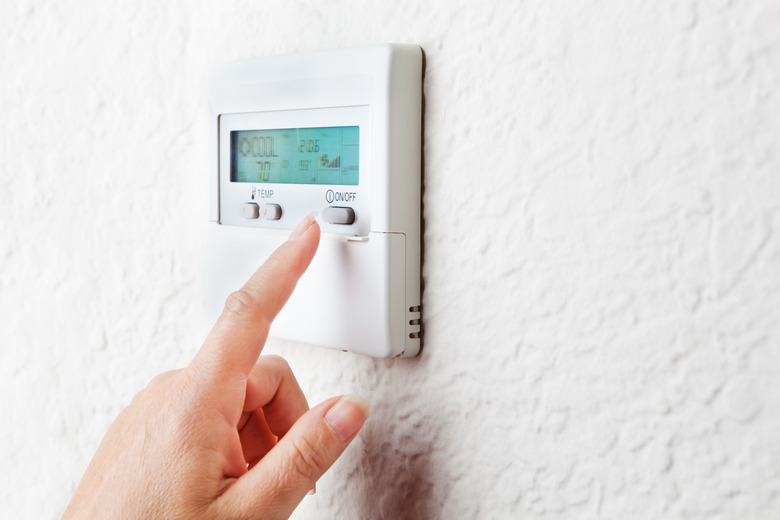My Furnace And AC Won't Turn On
We may receive a commission on purchases made from links.
A furnace and/or AC that won't turn on usually has a power supply issue or a tripped limit switch. Limit or safety switches turn off the system when a malfunction occurs. Some of these safety switches must be manually reset before the system will turn on again. However, the issue is sometimes simply a matter of power supply or a thermostat error, and it's easier to investigate these lines of inquiry first.
Thermostat Issues Affect HVAC Systems
Thermostat Issues Affect HVAC Systems
Start at the thermostat. Does the digital display look faded and difficult to read? The thermostat may need new batteries if so. Some thermostat models have a door that flips up to reveal batteries, whereas others must be pulled straight away from the wall and turned over.
Next, make sure the thermostat is set correctly. It sounds silly, but mistakes happen, and the furnace won't turn on if the indoor air temperature is warmer than the thermostat's temperature setting. Likewise, the air conditioner won't turn on if the indoor air temperature is cooler than the thermostat's temperature setting. Also, verify that the correct mode is selected and that there are no programmed "away" times overriding your settings.
Power Supply Failure
Power Supply Failure
Next, check your breaker or fuse box and confirm that no breakers have tripped or fuses have blown. If you reset the system and it continuously trips off, there's a dangerous amount of power running to the furnace or AC. Attempting to reset the breaker over and over could result in an electrical fire. Keep the breaker off and call an HVAC technician.
There's also a power switch near the furnace that allows HVAC technicians to quickly and conveniently shut off the electrical current running to the unit. It looks like a light switch, and it should be in the "up" position.
Types of HVAC Safety Switches
Types of HVAC Safety Switches
Safety switches stop the furnace or air conditioner from working in dangerous conditions, such as in the presence of excess heat, combustion gases, condensation, oil or dirt. One of the first safety switches you'll encounter on a furnace is the blower door safety switch. If someone were to fall into the blower fan as it spins around, that person could get seriously injured. When the door comes off, the electrical circuit is disconnected, and both the blower and the entire furnace stop running.
Other types of HVAC safety or limit switches and sensors include:
- Condensate pump limit switch, which shuts off the furnace if the condensate reservoir overflows with water.
- Pressure control switches, which shut off the air conditioner or heat pump in the event of excess refrigerant pressure.
- Pilot light sensor, which will not discharge gas into the combustion chamber unless the pilot light is lit.
- Heat exchanger limit switch, which turns off the furnace before the heat exchanger overheats and cracks.
- Roll-out switch, which turns off the furnace if the flames extend beyond the burner.
When to Call a Pro
When to Call a Pro
Because there are so many switches to evaluate in an HVAC system, it's smart to call a professional. An HVAC technician will confirm that all safety switches are in the correct position and can perform further diagnostics to determine where else an electrical short may have occurred.
Even if you pinpoint the problem on your own, you may still need to call an HVAC technician to help you reset the safety switches or fix the problem that triggers the switch in the first place. Furnaces and air conditioners can be dangerous when they don't work correctly, so calling in a pro is the best way to protect your family, enjoy peace of mind and perhaps even get a warranty on parts and workmanship.
